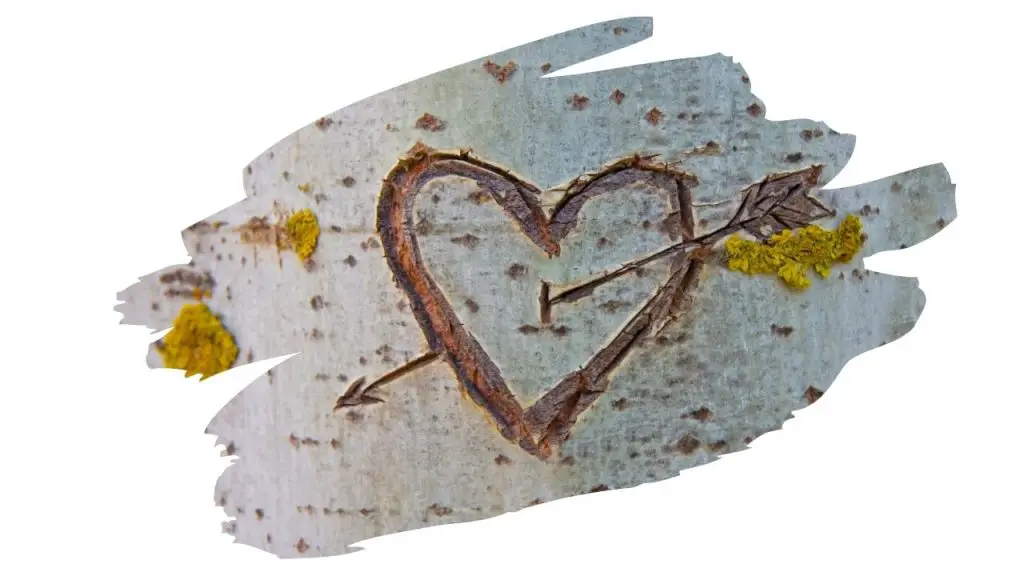Birch trees are a favorite backyard staple. You can find them growing in gardens across most northern parts of North America.
So wouldn’t it be great to cut down a couple branches of Birch and try carving this hardwood.
Well, first off, is birch wood really any good for carving?
Birch wood is widely used for making furniture, and is stronger and more durable than Pine or Oak. However, if you can get your hands on green freshly cut Birch wood, then it is a good wood for carving. The high moisture content inside fresh-cut Birch wood makes it malleable and easy to work with.
However, even though green birch wood is good for carving, it is not the easiest wood to whittle (that title would go to Basswood).
Also, Birch can rot and decay quickly if even a tiny bit of moisture gets into the grain. So, making bowls and spoon carvings out of Birch probably isn’t the best choice either.
Still, don’t throw in the towel on your Birch wood carving just yet. Instead, keep reading to find out everything you need to know about carving with this North American timber…

This post may contain affiliate links to products that we receive a commission for (at no additional cost to you). Learn more here.
Which Wood Is Best For Carving?
Basswood is the best choice for whittling, especially for beginners.
Also known by its European counterpart name, ‘Lime Wood’, Basswood is light and pliable.
Honestly, if you had to choose a wood for carving with, Basswood is a better option than Birch. It is less expensive and simpler to work with.
If you want to find out why Basswood is rated so highly for woodcarving then simply click here to find out more.
And if you want to get your hands on some surprisingly affordable Basswood carving blocks, then click here to check out our quick and simple guide to buying wood for carving.
So, Is Birch Really A Good Wood For Carving?
It certainly is, although it is more of a ‘training-wheels’ woodcarving lumber. Similar to Poplar and Aspen wood, you can use Birch wood for practicing your carving techniques on.
However, it can get tough to work with once it dries out. And its grain pattern is quite plain looking compared to more classy-looking patterns such as Cherry wood.
Is Birch Wood Good For Whittling?
Yes it is, but you need to be working with green birch.
Green birch is simply birch that has been freshly cut from the tree. And the moisture content inside a fresh Birch branch is high enough to make it an easy cut.
As birch dries out, and its moisture content falls, it will become increasingly more difficult to whittle.
But, Doesn’t Birch Wood Rot Easily?
Birch wood bark is incredibly watertight, more so than most other hardwood bark.
It’s extra water-resistant bark, however, means that the wood fibers underneath it have to work extra hard to soak up moisture and hang onto that water.
So, when you cut birch wood down and expose its inner grain to the elements it over compensates, only to then take on rot, decay and even burrowing insects with little resistance.
For a comparison, lets say you cut down an oak tree and left the stump. It can take 25-50 years for that oak wood to rot away.
A pile of birch wood, on the other hand, would barely last a few months before becoming a stack of rotten wood.
The best way to prevent Birch from rotting is to keep it stored in a cool, dry, well-ventilated area until you are ready to use it.
And when you do use it for a woodworking project, make sure you are using it to craft something that will be used or displayed indoors (not outside).
Is Birch Wood Waterproof? Outside, growing in the wild, Birch is a natural when it comes to keeping out water. Its rough-textured bark forms a 100% waterproof seal around the tree. Once cut, however, the grain inside shows little resistance against fungus and rot.
Related Post: Can You Put Danish Oil On Birch Plywood? (What You Really Need To Know)
Some Final Thoughts
At the end of the day, if you can access a fresh Birch tree branch, then it is perfect for wood carving practice.
If you need to work on a more time-consuming intricate carving, then Birch is not the best choice. This is because you need to work on it quickly. If Birch dries out and hardens, it becomes very difficult to carve it with your whittling tools.
And trying to soften up that hard Birch isn’t an option either. A popular technique for softening up difficult to carve wood involves soaking it in water. And that is the last thing you’ll want to do with any piece of Birch. And why is that? Well, because any added water/moisture is only going to cause it to rot away fast.



